Coachbuilders steel the limelight in psv
Page 48
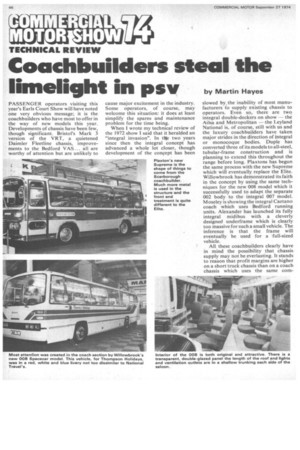
Page 49
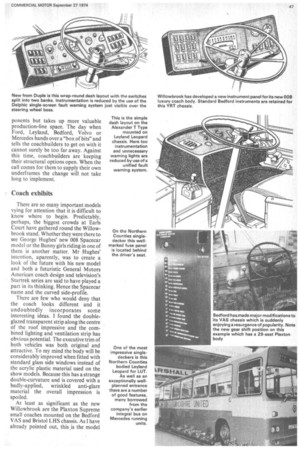
Page 50
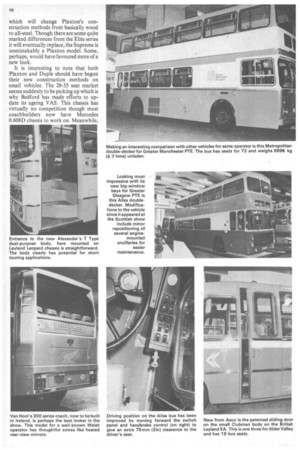
Page 54
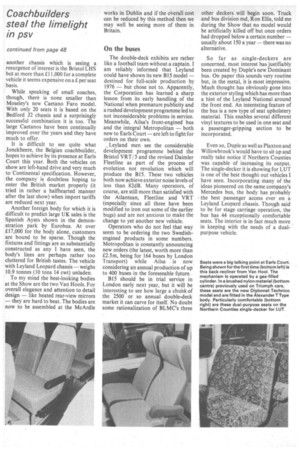
Page 76
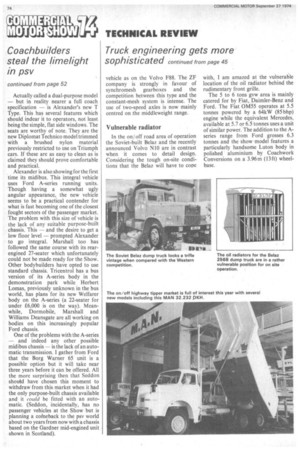
If you've noticed an error in this article please click here to report it so we can fix it.
by Martin Hayes
PASSENGER operators visiting this year's Earls Court Show will have noted one very obvious message; it is the coachbuilders who have most to offer in the way of new models this year. Developments of chassis have been few, though significant. Bristol's Mark 3 version of the VRT, a quietened Daimler Fleetline chassis, improvements to the Bedford VAS... all are worthy of attention but are unlikely to cause major excitement in the industry. Some operators, of course, may welcome this situation: it does at least simplify the spares and maintenance problem for the time being.
When I wrote my technical review of the 1972 show I said that it heralded an "integral invasion". In t* two years since then the integral concept has advanced a whole lot closer, though development of the concept has been slowed by the inability of most manufacturers to supply existing chassis to operators. Even so, there are two integral double-deckers on show — the Ailsa and Metropolitan —the Leyland National is, of course, still with us and the luxury coachbuilders have taken major strides in the direction of integral or monocoque bodies. Duple has converted three of its models to all-steel, tubular-frame construction and is planning to extend this throughout the range before long. Plaxtons has begun the same process with the new Supreme which will eventually replace the Elite. Willowbrook has demonstrated its faith in the concept by using the same techniques for the new 008 model which it successfully used to adapt the separate 002 body to the integral 007 model. Moseley is showing the integral Caetano coach which uses Bedford running units. Alexander has launched its fully integral midibus with a cleverly designed underframe which is clearly too massive for such a small vehicle. The inference is that the frame will eventually be used for a full-sized vehicle.
All these coachbuilders clearly have in mind the possibility that chassis supply may not be everlasting. It stands to reason that profit margins are higher on a short truck chassis than on a coach chassis which uses the same corn ponents but takes up more valuable production-line space. The day when Ford, Leyland, Bedford, Volvo or Mercedes hands over a "box of bits" and tells the coachbuilders to get on with it cannot surely be too far away. Against this time, coachbuilders are keeping their structural options open. When the call comes for them to supply their own underframes the change will not take long to implement.
• Coach exhibits
There are so many important models vying for attention that it is difficult to know where to begin. Predictably, perhaps, the biggest crowds at Earls Court have gathered round the Willowbrook stand. Whether they were there to see George Hughes' new 008 Spacecar model or the Bunny girls riding in one of them is another matter. Mr Hughes' intention, aparently, was to create a look of the future with his new model and both a futuristic General Motors American coach design and television's Startrek series are said to have played a .part in its thinking. Hence the Spacecar name and the curved side-profile.
There are few who would deny that the coach looks different and it undoubtedly incorporates some interesting ideas. I found the doubleglazed transparent strip along the centre of the roof impressive and the combined lighting and ventilation strip has obvious potential. The executive trim of both vehicles was both original and attractive. To my mind the body will be considerably improved when fitted with standard glass side windows instead of the acrylic plastic material used on the show models. Because this has a strange double-curvature and is covered with a badly-applied, wrinkled anti-glare material the overall impression is spoiled.
At least as significant as the new Willowbrook are the Plaxton Supreme small coaches mounted on the Bedford VAS and Bristol LHS chassis. As! have already pointed out, this is the model which will change Plaxton's construction methods from basically wood to all-steel. Though there are some quite marked differences from the Elite series it will eventually replace, the Supreme is unmistakably a Plaxton model. Some, perhaps, would have favoured more of a new look.
It is interesting to note that both Plaxton and Duple should have begun their new construction methods on small vehicles. The 29-35 seat market seems suddenly to be picking up which is why Bedford has made efforts to update its ageing VAS. This chassis has virtually no competition though most coachbuilders now have Mercedes 0.608D chassis to work on. Meanwhile, another chassis which is seeing a resurgence of interest is the Bristol LHS but at more than £11,000 for a complete vehicle it seems expensive on a £ per seat basis, While speaking of small coaches, though, there is none smaller than Moseley's new Caetano Faro model. With only 20 seats it is based on the Bedford J2 chassis and a surprisingly successful combination it is too. The large Caetanos have been continually improved over the years and they have much to offer.
It is difficult to see quite what Jonckheere, the Belgian coachbuilder, hopes to achieve by its presence at Earls Court this year. Both the vehicles on show are left-hand drive and very much to Continental specification. However, the company is doubtless hoping to enter the British market properly (it tried in rather a halfhearted manner after the last show) when import tariffs are reduced next year.
Another foreign body for which it is difficult to predict large UK sales is the Spanish Ayats shown in the demonstration park by Eurobus. At over £17,000 for the body alone, customers are bound to be sparse. Though the fixtures and fittings are as substantially constructed as any I have seen, the body's lines are perhaps rather too cluttered for British tastes. The vehicle with Leyland Leopard chassis — weighs 10.9 tonnes (10 tons 14 cwt) unladen.
To my mind the best-looking bodies at the Show are the two Van Hools. For overall elegance and attention to detail design — like heated rear-view mirrors — they are hard to beat. The bodies are now to be assembled at the McArdle works in Dublin and if the overall cost can be reduced by this method then we may well be seeing more of them in Britain.
On the buses The double-deck exhibits are rather like a football team without a captain. I am reliably informed that Leyland could have shown its new B15 model — destined for full-scale production by 1976 — but chose not to. Apparently, the Corporation has learned a sharp lesson from its early handling of the National when premature publicity and a rushed development programme led to not inconsiderable problems in service. Meanwhile, Ailsa's front-engined bus and the integral Metropolitan — both new to Earls Court — are left to fight for orders on their own.
_ Leyland men see the considerable development programme behind the Bristol VRT/ 3 and the revised Daimler Fleetline as part of the process of evolution not revolution which will produce the B15. These two vehicles both now achieve exterior noise levels of less than 82dB. Many operators, of course, are still more than satisfied with the Atlantean, Fleetline and VRT (especially since all three have been modified to iron out some of the earlier bugs) and are not anxious to make the change to yet another new vehicle.
Operators who do not feel that way seem to be ordering the two Swedishengined products in some numbers. Metropolitan is constantly announcing new orders (the latest, worth more than £2.5m, being for 164 buses by London Transport) while Ailsa is now considering an annual production of up to 400 buses in the foreseeable future.
B15 should be in trial service in London early next year, but it will be interesting to see how large a chunk of the 2500 or so annual double-deck market it can carve for itself. No doubt some rationalization of BLMC's three other deckers will begin soon. Truck and bus division md, Ron Ellis, told me during the Show that no model would be artificially killed off but once orders had dropped below a certain number — usually about 150 a year — there was no alternative.
So far as single-deckers are concerned, most interest has justifiably been created by Duple's new Dominant bus. On paper this sounds very routine but, in the metal, it is most impressive. Much thought has obviously gone into the exterior styling which has more than a hint of the Leyland National around the front end. An interesting feature of the bus is a new type of seat upholstery material. This enables several different vinyl textures to be used in one seat and a passenger-gripping section to be incorporated.
Even so, Duple as well as Plaxton and Willowbrook's would have to sit up and really take notice if Northern Counties was capable of increasing its output. The single-decker it is showing for LUT is one of the best thought out vehicles I have seen. Incorporating many of the ideas pioneered on the same company's Mercedes bus, the body has probably the best passenger access ever on a Leyland Leopard chassis. Though said to be for stage carriage operation, the bus has 44 exceptionally comfortable seats. The interior is in fact much more in keeping with the needs of a dualpurpose vehicle. Actually called a dual-purpose model — but in reality nearer a full coach specification — is Alexander's new T Type. This has several features which should indear it to operators, not least being the simple, flat side windows. The seats are worthy of note. They are the new Diplomat Technic° model trimmed with a brushed nylon material previously restricted to use on Triumph cars. If these are as easy to clean as is claimed they should prove comfortable and practical.
Alexander is also showing for the first time its midibus. This integral vehicle uses Ford A-series running .units. Though having a somewhat ugly angular appearance, the new vehicle seems to be a practical contender for what is fast becoming one of the closest fought sectors of the passenger market. The problem with this size of vehicle is the lack of any suitable purpose-built chassis. This — and the desire to get a low floor level — prompted Alexander to go integral. Marshall too has followed the same course with its rearengined 27-seater which unfortunately could not be made ready for the Show. Other bodybuilders have opted to use standard chassis. Tricentrol has a bus version of its A-series body in the demonstration park while Herbert Lomas, previously unknown in the bus world, has plans for its new Welfarer body on the A-series (a 22-seater for under £6,000 is on the way). Meanwhile, Dormobile, Marshall and Williams Deansgate are all working on bodies on this increasingly popular Ford chassis.
One of the problems with the A-series — and indeed any other possible midibus chassis — is the lack of an automatic transmission. I gather from Ford that the Borg Warner 65 unit is a possible option but it will take near three years before it can be offered. All the more surprising then that Seddon should have chosen this moment to withdraw from this market when it had the only purpose-built chassis available and it could be fitted with an automatic. (Seddon, incidentally, has no passenger vehicles at the Show but is planning a comeback to the psv world about two years from now with a chassis based on the Gardner mid-engined unit shown in Scotland).




























































































































































